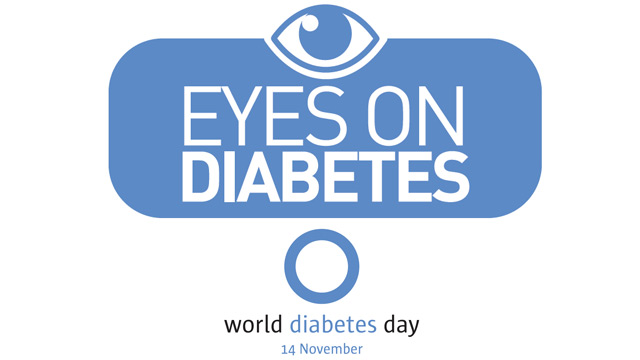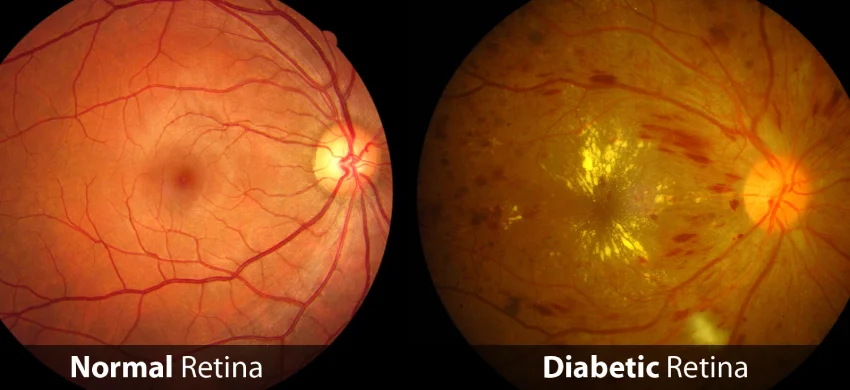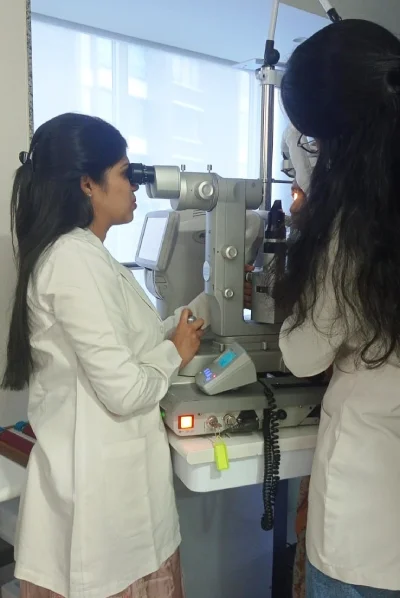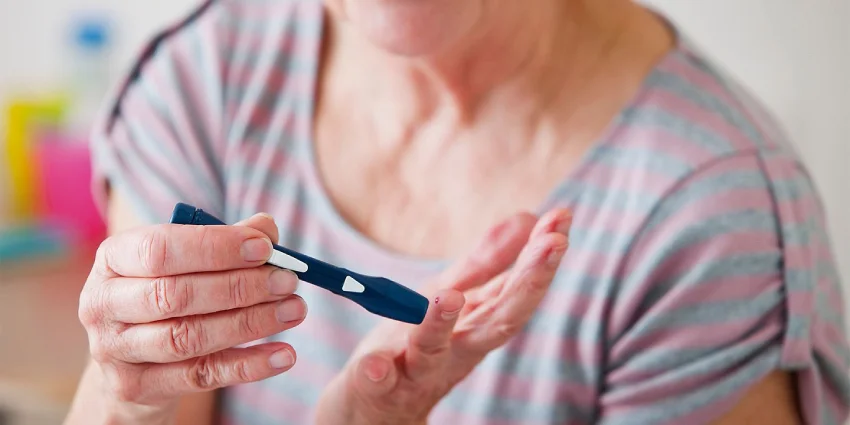Diabetes disrupts our body’s ability to use sugar for energy. When the body can’t produce enough insulin or use it properly, it results in high blood sugar, known as hyperglycemia. This condition, common in diabetes, poses a significant risk to vital organs, particularly the kidneys and eyes. The eyes, being highly sensitive, are prone to damage that can ultimately lead to blindness. Diabetes stands as the primary cause of blindness in individuals aged 20 to 74.
When the eyes are affected, the first sign is often blurry vision. This can happen because of fluid leaking into the eyes or cloudiness in the lens. Any eye disease caused by diabetes can be dangerous and even lead to permanent blindness.
November 14 is World Diabetes Day. Let us know a group of eye conditions that can result from diabetes.

1. Diabetic retinopathy
Diabetic retinopathy occurs when alterations in the blood vessels of the retina lead to either leakage or the development of abnormal new blood vessels on the retina’s surface. Regular eye examinations are crucial to ensure timely detection, allowing your doctor to provide necessary treatments when needed.

2. Macular Edema
Diabetes can lead to swelling in the macula, the central part of the retina responsible for clear, straight vision. This swelling is caused by leaky blood vessels, potentially causing blurred or distorted vision.
3. Glaucoma
One form of glaucoma, is caused by diabetes. Elevated sugar levels have the potential to harm the blood vessels in the retina, leading to the formation of abnormal new vessels. If these new vessels develop on the iris (the colored part of the eye), it can elevate eye pressure and contribute to the development of glaucoma.
4. Cataracts
In individuals with diabetes, cataracts may develop earlier and advance more rapidly due to elevated blood sugar levels. This leads to a cloudy buildup in the eye’s lens, ultimately forming a cataract.
Moving on to the prevention aspect.
Preventing Diabetic Eye Disease in 5 🖐🏻 Simple Steps:
By taking these 5 practical steps to prevent diabetes and managing your blood sugar levels, you can reduce the risk of eye damage and protect your vision.
👉🏻 1st Step: Get a comprehensive dilated eye examination
Typically, it is advised to undergo a comprehensive diabetes eye examination annually, regardless of whether you have observed any issues with your vision.
Diabetic eye diseases often show minimal symptoms until they reach an advanced stage. Through a dilated eye examination, your ophthalmologist can detect subtle signs indicating that diabetes may be affecting your vision.


👉🏻 2nd Step: Control your blood sugar.
Elevated blood sugar levels can alter the shape of your eye’s lens, resulting in temporary blurry vision that returns to normal once your blood sugar stabilizes. Additionally, high blood sugar can harm the blood vessels in your eyes. Effectively managing your blood sugar is crucial in preventing these issues.
Maintaining normal blood sugar levels through a combination of a healthy diet, regular exercise, and prescribed medications is key to ensuring the health of your blood vessels and preserving your eyesight.

👉🏻 3rd Step: Keep an active lifestyle.
Regular exercise contributes to managing blood sugar levels, reducing blood pressure, and enhancing blood circulation. Even with diabetes, you can prevent diabetic eye disease by effectively managing your condition. Seek advice from an ophthalmologist specializing in diabetic eye care if you have additional questions.

👉🏻 4th Step: Quit smoking
Smoking can harm your eyes in many ways. It increases the risk of serious eye diseases like cataracts, where your eye’s lens becomes cloudy, and macular degeneration, which affects the center of your vision. Smoking can also damage the optic nerve, causing blindness. Quitting smoking is a vital step to protect your eyes and keep your vision clear and healthy.

👉🏻 5th Step: Maintain a healthy diet.
Ensuring a nutritious diet is crucial for safeguarding your eyes with diabetes. Incorporating fruits, vegetables, whole grains, and lean proteins into your meals can play a key role in preventing diabetic eye diseases. Boosting your consumption of antioxidants, adds an extra layer of protection to your eyes, lowering the risk of vision loss.

Ready to safeguard your eyes? Consult with Dr. Sonia Maheshwari today for personalized advice for preventing diabetic eye diseases. Your vision matters!

